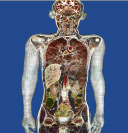Founded the network coding theory
For a very long time, investigators have been exploring exhaustively to improve the efficiency of the network, generally by extending existing methods. For example, the former Vice-Chancellor of the CUHK, Charles K. Kao has replaced copper cables by optical fiber to reduce attenuation in signal transmission, opening the door to the information age.
Before the groundbreaking Network Coding Theory published seven years ago by the aforesaid Professor Shuo-Yen Robert Li, Professor Raymond Wai-Ho Yeung, Dr. Ning Cai of Department of Information Engineering at CUHK and Professor Rudolf Ahlswede from Germany, the network has always been a simple “store-and-forward” system, a mechanism similar to the operation of the postal/transport system in our daily life. Network coding theory replaces routers with coders, which transmit evidence of a message instead of sending the message itself. Receiver can deduce the original message by the evidence collected, leading to enhanced capacity and efficiency.
 |
|
 |





















